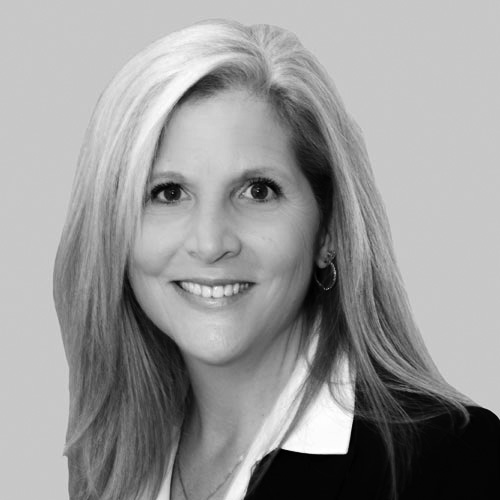The unmistakable red-shingle roofs of Red Roof Inn are a familiar sight for both business and vacation travelers around the country. The hotel chain is a major force in the economy lodging industry, with more than 400 properties in the United States. But widespread brand recognition wasn’t enough for the hotel chain, which brought Phil Hugh in as chief development officer in 2013 to lead the company’s ambitious rebranding and growth strategy.
Phil Hugh’s journey up the hospitality ladder
“The hotel business was the last place I thought I would land,” Hugh says. After taking a position as a night auditor at what would become the Pittsburgh Airport’s Travel Lodge, Hugh enrolled in a manager-training program, which put him on the path to becoming a general manager, and eventually a hotel franchisee. Working there gave Hugh the experience to see what it takes to be successful in the hospitality industry. “That [position] really made me fall in love with the business,” he says. Prior to arriving at Red Roof, he was the executive vice president of worldwide franchise sales for the Realogy Franchise Group.
Hugh embraces obstacles. Again, he credits learning this skill while working in hospitality, where any odd job, such as checking in guests or cleaning rooms, can’t go undone. That inner knowledge about the industry has deeply affected Hugh’s relationships with franchise owners.
Since Hugh is also a former hotel franchisee, he understands what franchisees face every day, and it drives him to constantly improve the relationship between franchisee and franchisor. At Red Roof, he juggles portfolio management, operations support, and merger oversight. Yet it always comes back to the company’s commitment to quality and the customer, Hugh says.
Hugh brings more than twenty-five years of experience in the hospitality industry. In his role at Red Roof Inn, he is in charge of both brand relations with existing franchisees and developing new opportunities to further grow the company. All Red Roof properties are franchised, but the company manages about 40 percent of that portfolio.
As part of its rebranding campaign, Red Roof recently completed over $200 million worth of renovations and upgrades in numerous hotels to bring a more modern aesthetic to the properties. The company is also unveiling its new Red Roof PLUS+ locations, which offer enhanced lodging—with features like premium rooms, flatscreen TVs, and other amenities—at a more affordable price than comparable hotels.
Focusing the Team
Hugh arrived at Red Roof at the end of 2013, during a time when the brand already enjoyed a loyal following and promising metrics. As Hugh strategized about rebranding, it was critical for him to be surrounded by a team that understood what Red Roof was trying to achieve. “You’ve got to build a team that believes in the culture,” he says. On the operations side, the average work experience at Red Roof for many of Hugh’s colleagues is more than twenty years. That type of background is crucial for a team to deliver on the promise of Red Roof’s goals.
Every day Hugh and his team commit to strengthening and building relationships. As the Red Roof brand evolves, it is important for Hugh to remember that the customer is the center of any discussion. “We just embraced our customer,” he says. “We understand what they need and what they like.” That focus on quality has kept Hugh successful as Red Roof’s chief development officer. He believes that leadership means keeping the team focused on the larger picture, which also means positioning Red Roof’s brand for sustained future growth.
Aligning the Leadership
Hugh and his team traveled the country to visit franchisees, focusing on the quality of relationships. “We went back to the basics,” Hugh says. They logged thousands of miles, abiding by the principle of knowing their customer by literally going from hotel to hotel and meeting as many franchisees as possible. The fact that Red Roof has management history, and continues to manage a large number of the hotels, gives franchisees confidence that the brand strategy is not developed in a vacuum. Hugh refers to the managed portfolio as “test kitchen” initiatives. This unique partnership of franchise feedback and corporate involvement is imperative for the overall growth of the company.
One of Hugh’s most memorable days is when he met with the Franchise Advisory Council, a group of elected and appointed franchisees formed to facilitate open communication and collaboration. For Hugh, that face-to-face meeting solidified the agreement among the leadership of Red Roof, both corporate and franchise leaders, about how to best grow and rebrand the company. This alignment is reflected in a franchise agreement that provides for the needs of the customer without compromising quality.
Maintaining Brand Quality
Red Roof has an ambitious schedule when it comes to continued growth. “We still have significant opportunity within the United States,” Hugh notes. He is pleased with the achievements in the last eighteen months, but he says that the development pipeline continues to grow. While Red Roof envisions aggressive growth, Hugh maintains that it is essential to keep the quality of its product to ensure happy and loyal customers.
That growth translated to the first international expansion of Red Roof. The company recently announced it was beginning to build properties in both Canada and Brazil. Hugh stresses that those projects were thoughtfully arranged. “For [Red Roof], it’s about the relationship and the right partner,” he says. As Red Roof looks to grow internationally, it is integral for Hugh and his team to keep the brand true to its foundation of quality and value. The company refuses to risk compromising that authenticity during expansion. “We are very cautious, but optimistic about our growth outside of the United States,” Hugh says.

